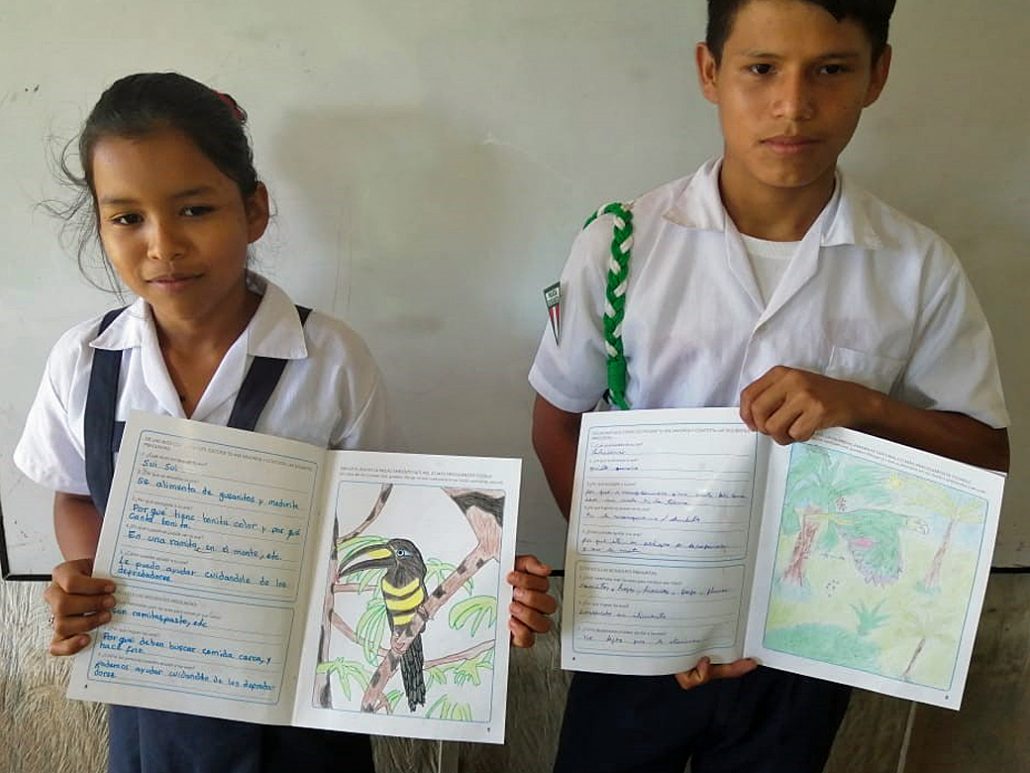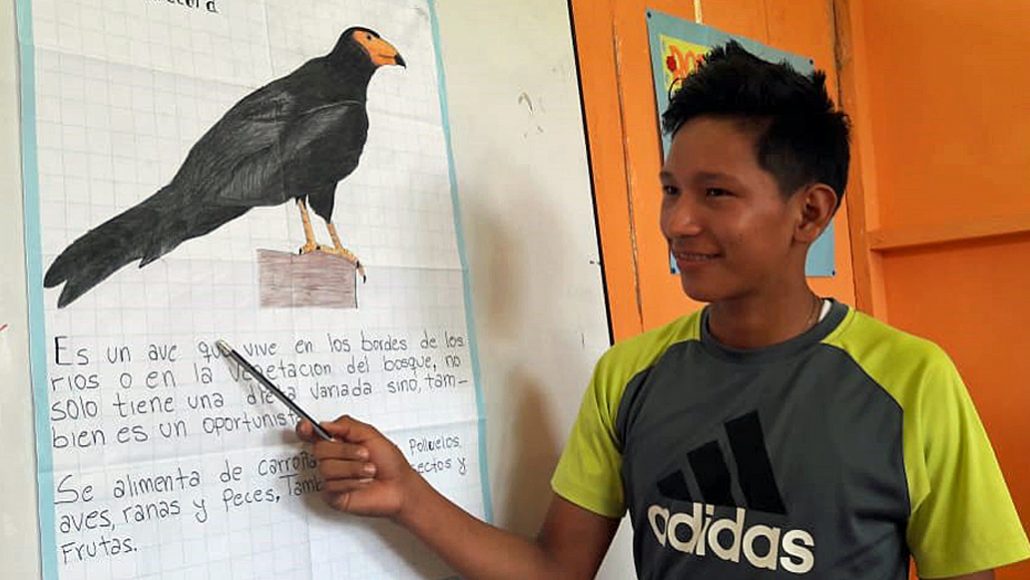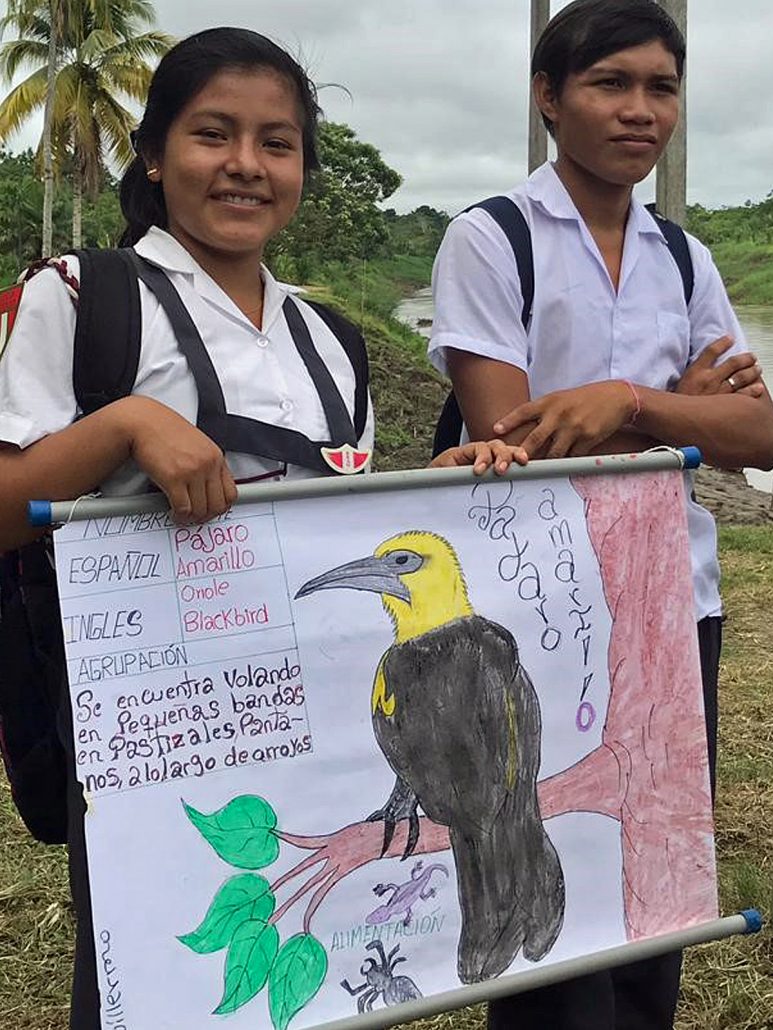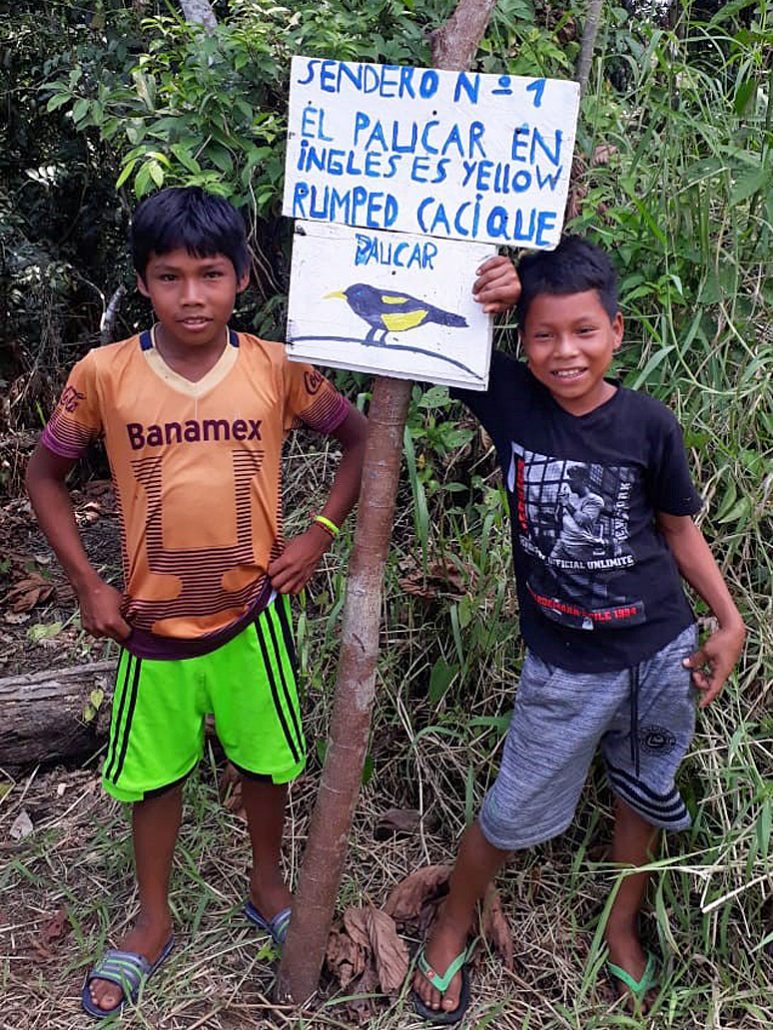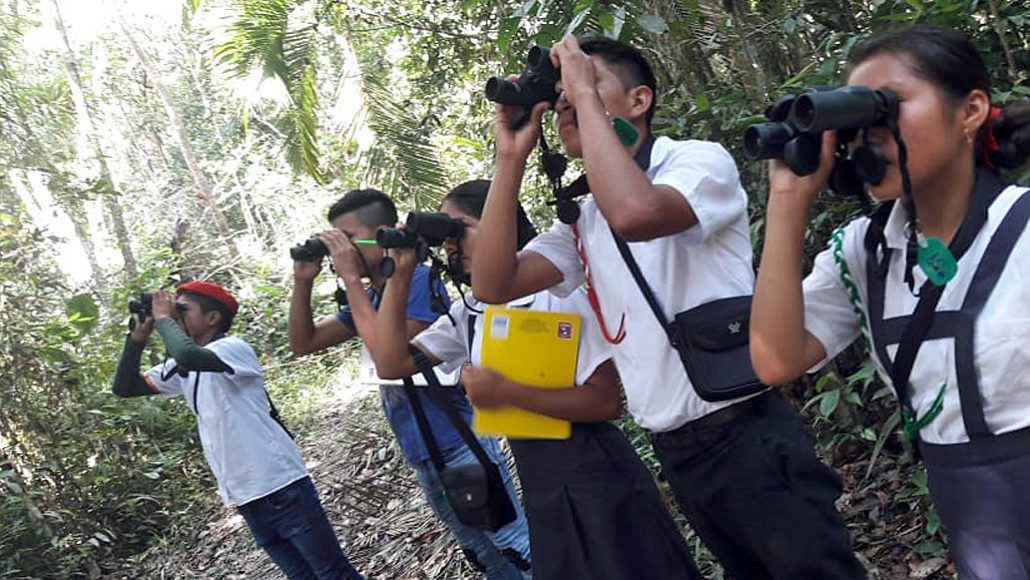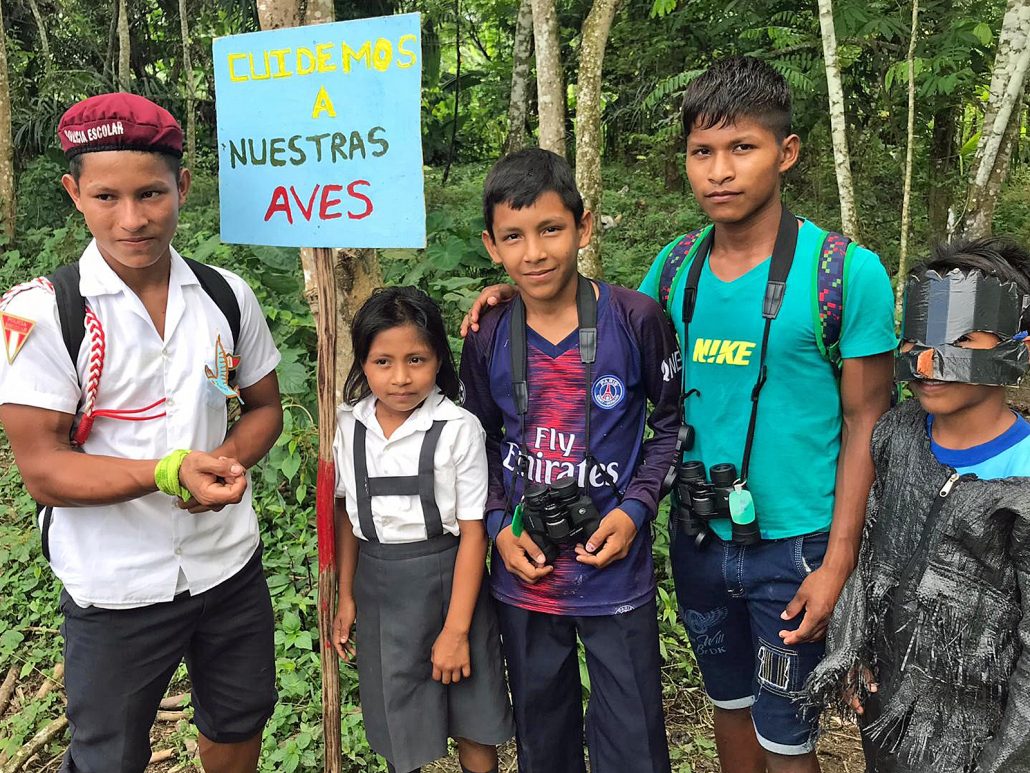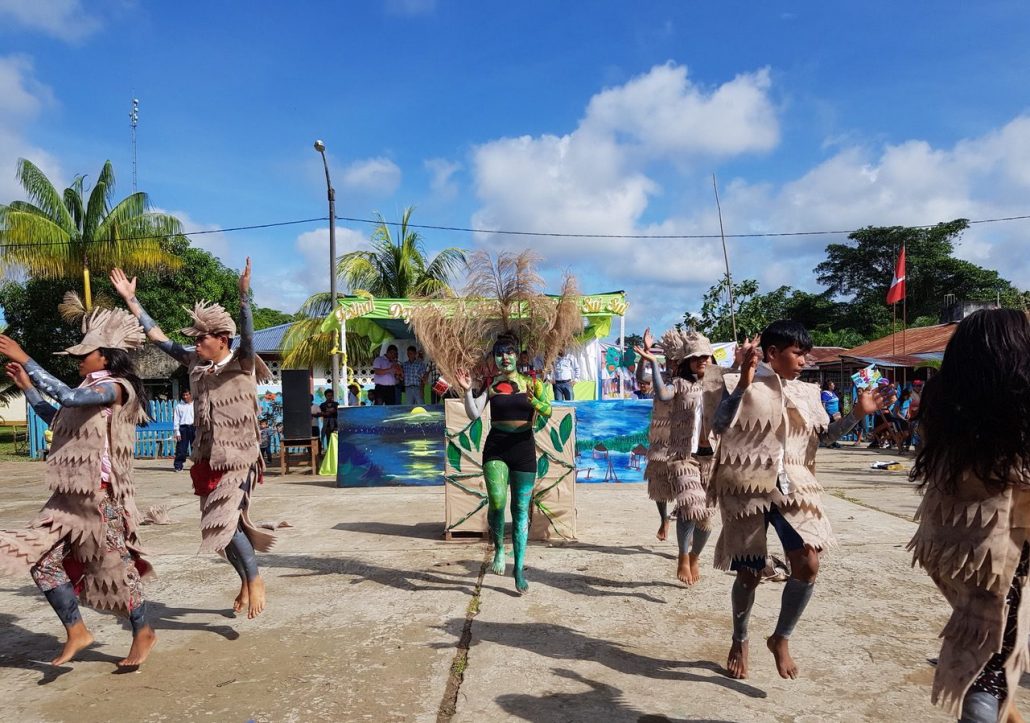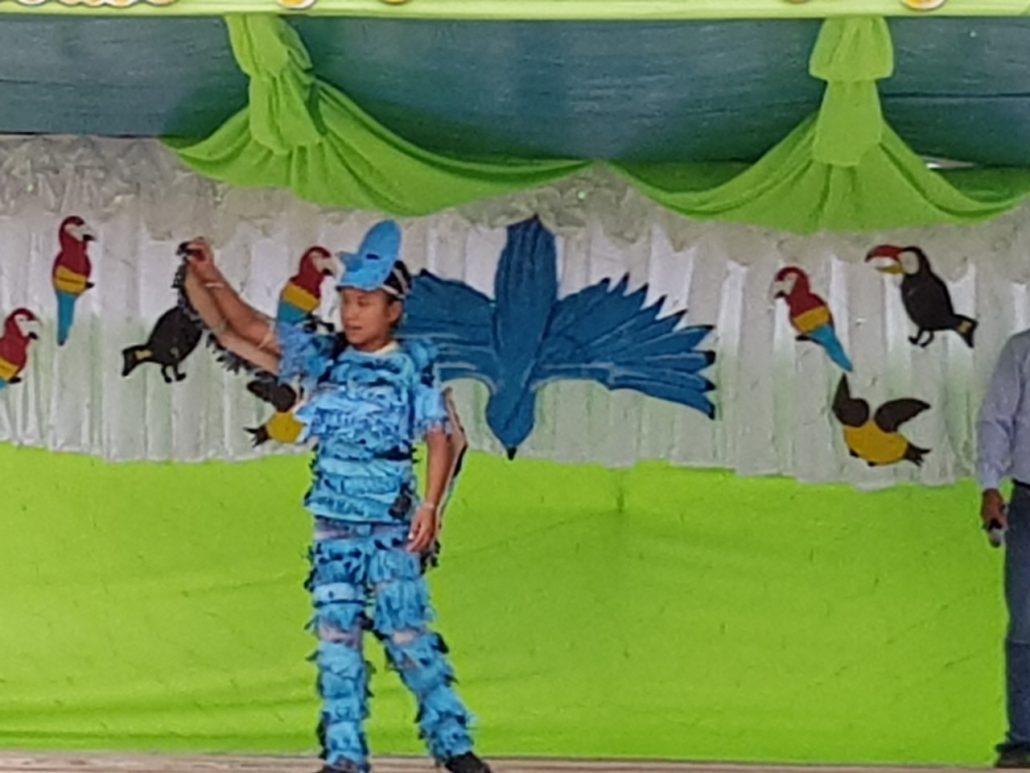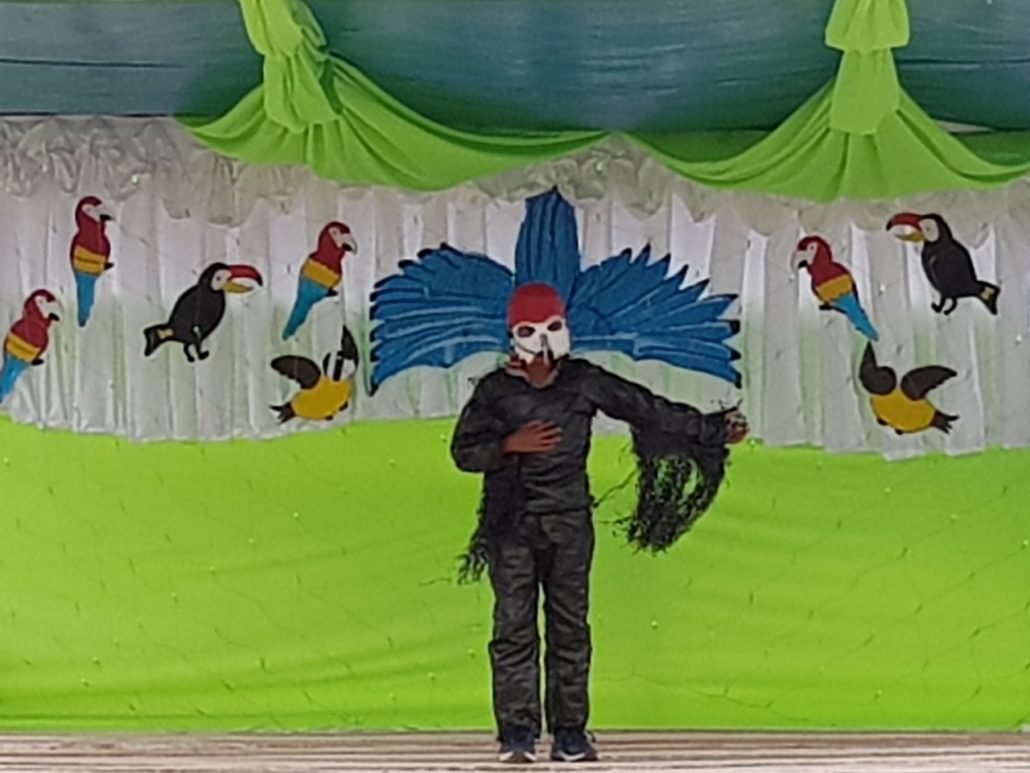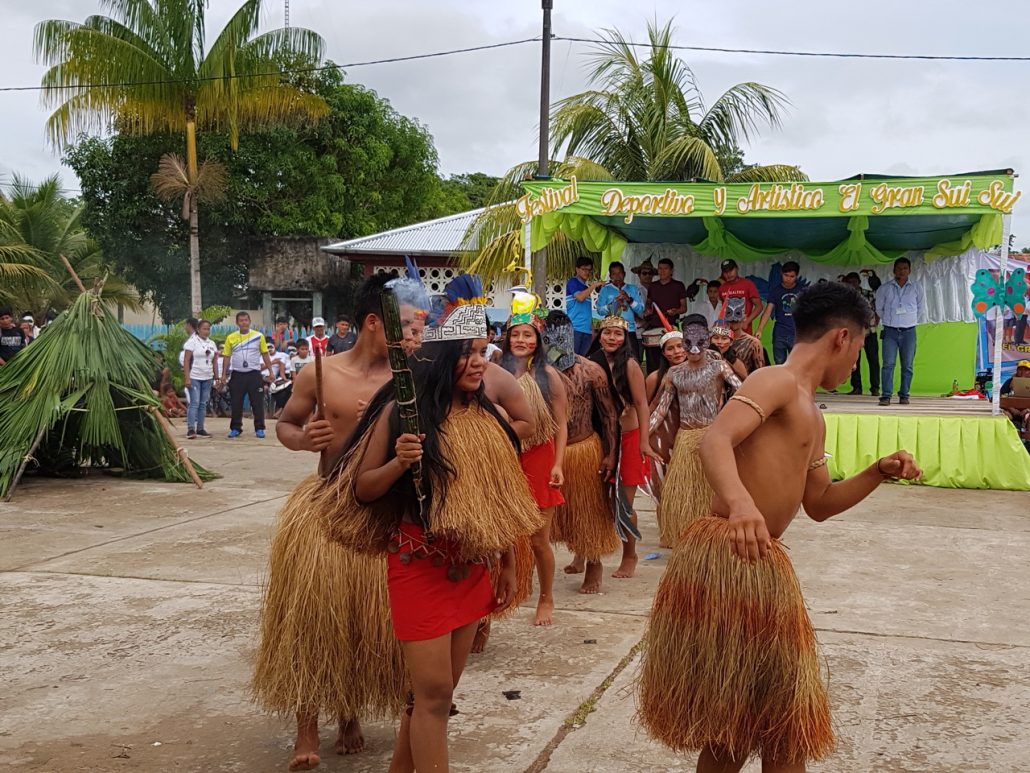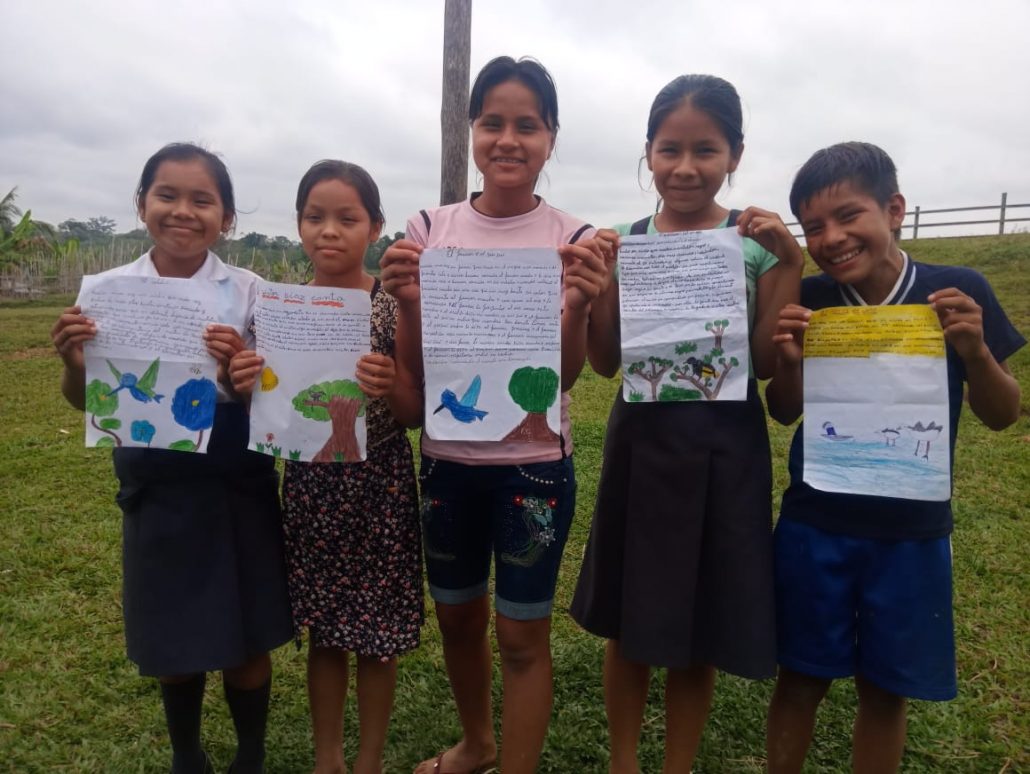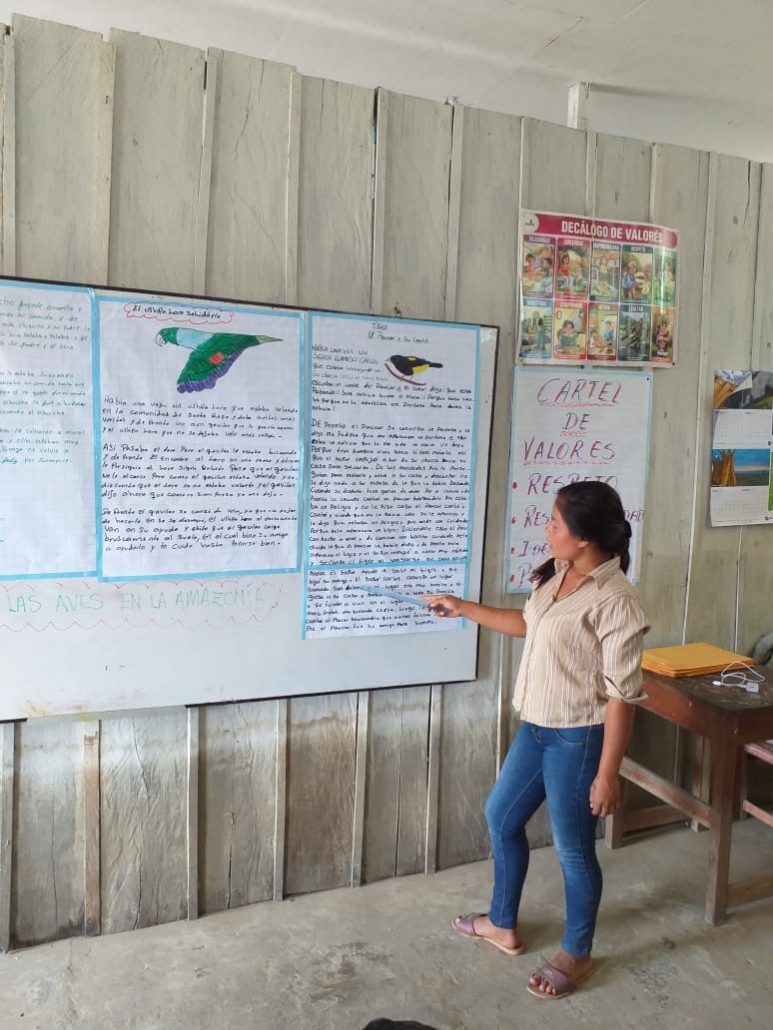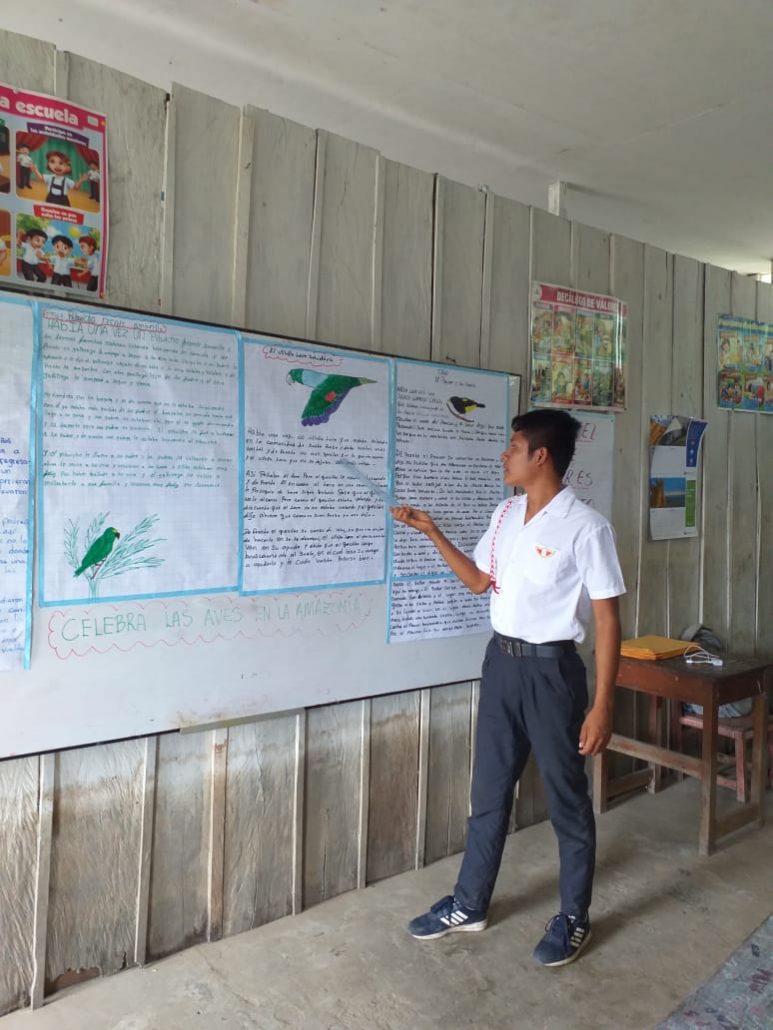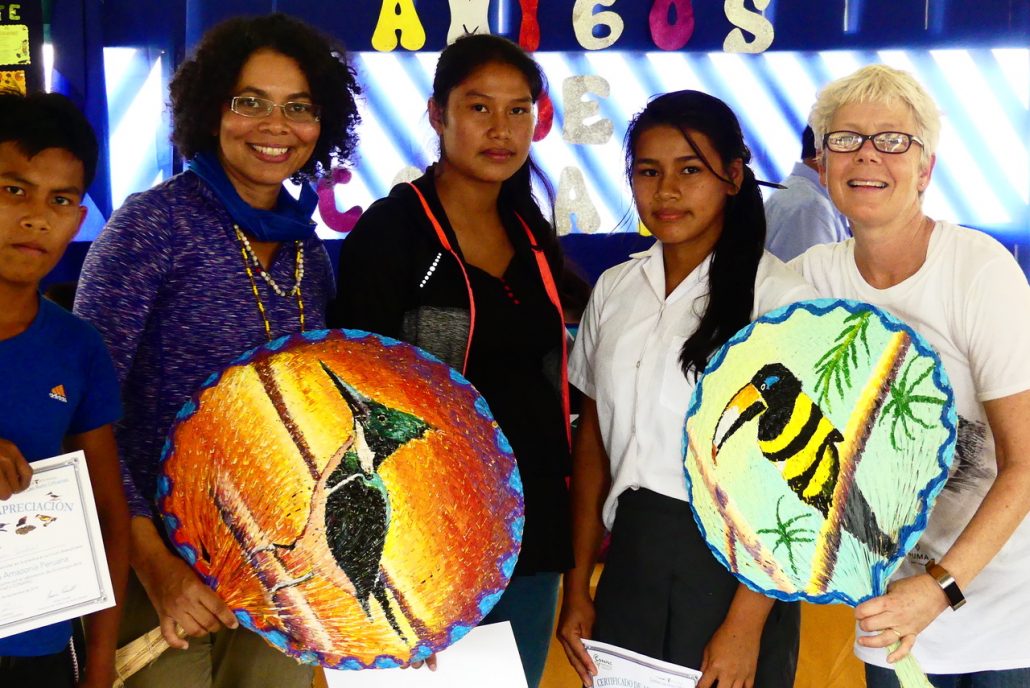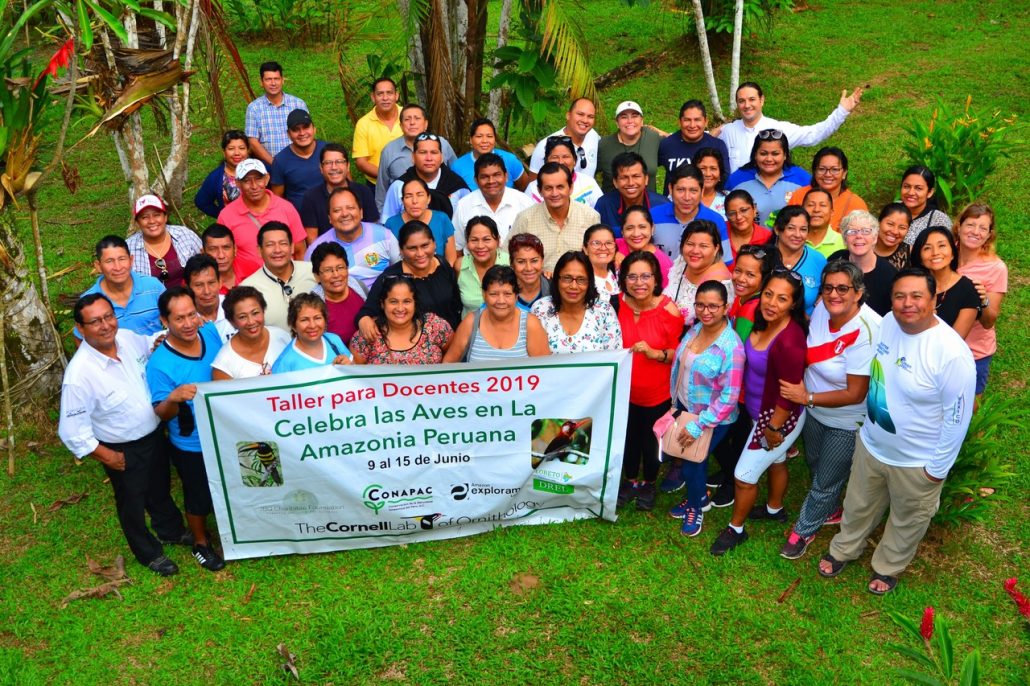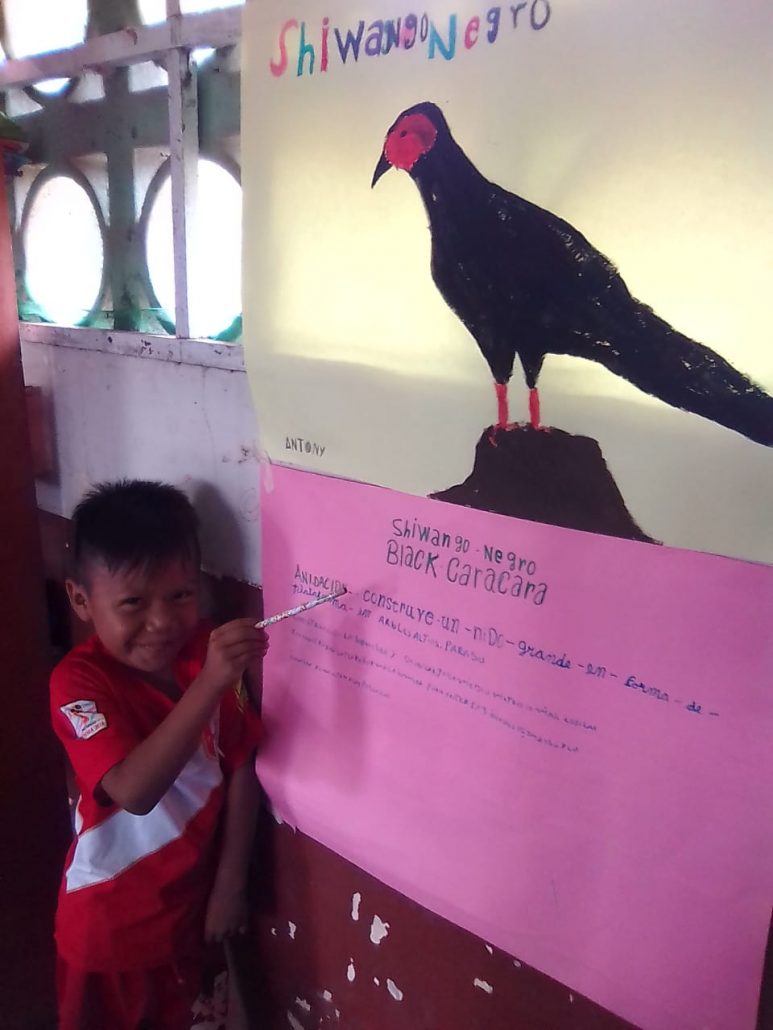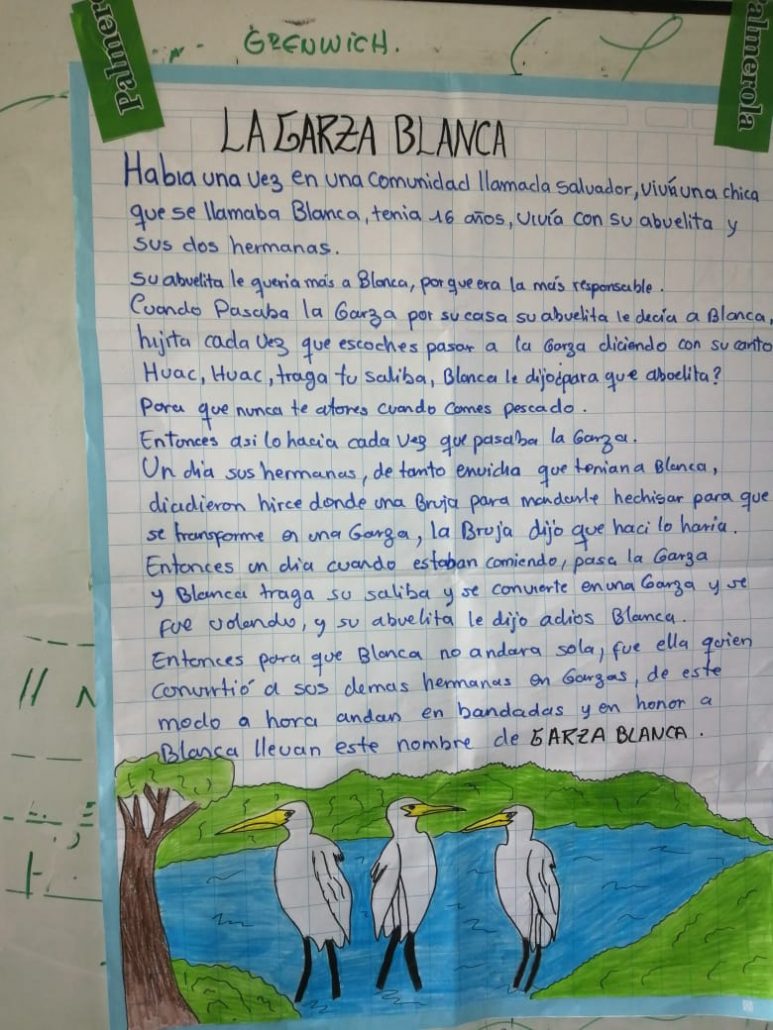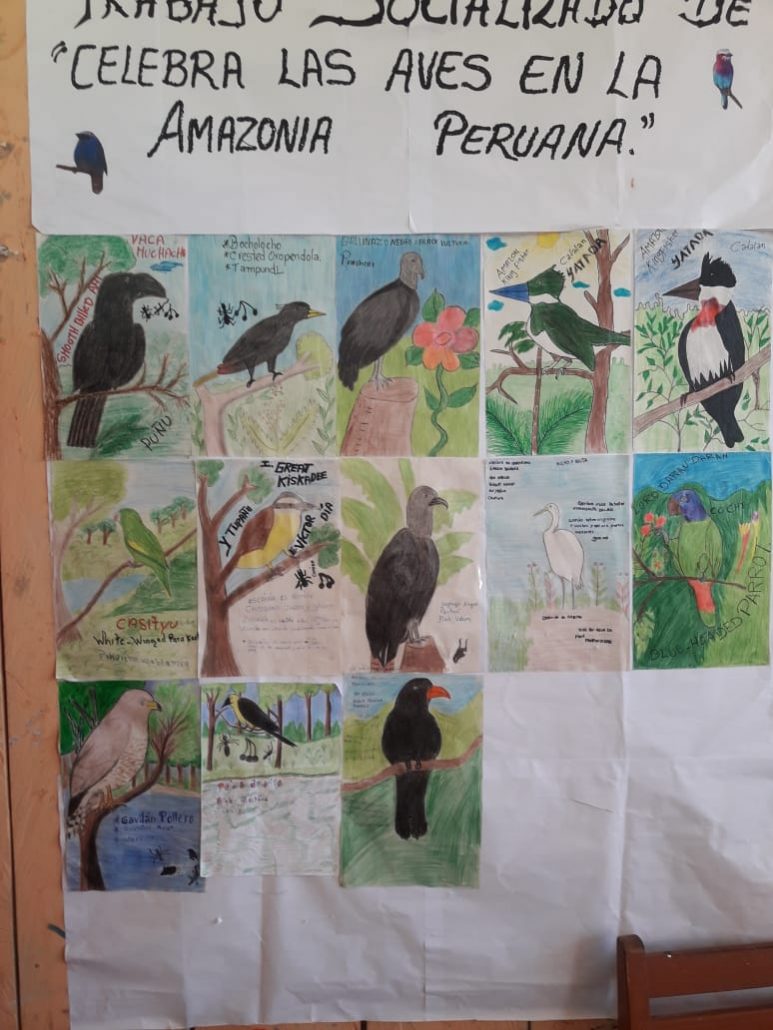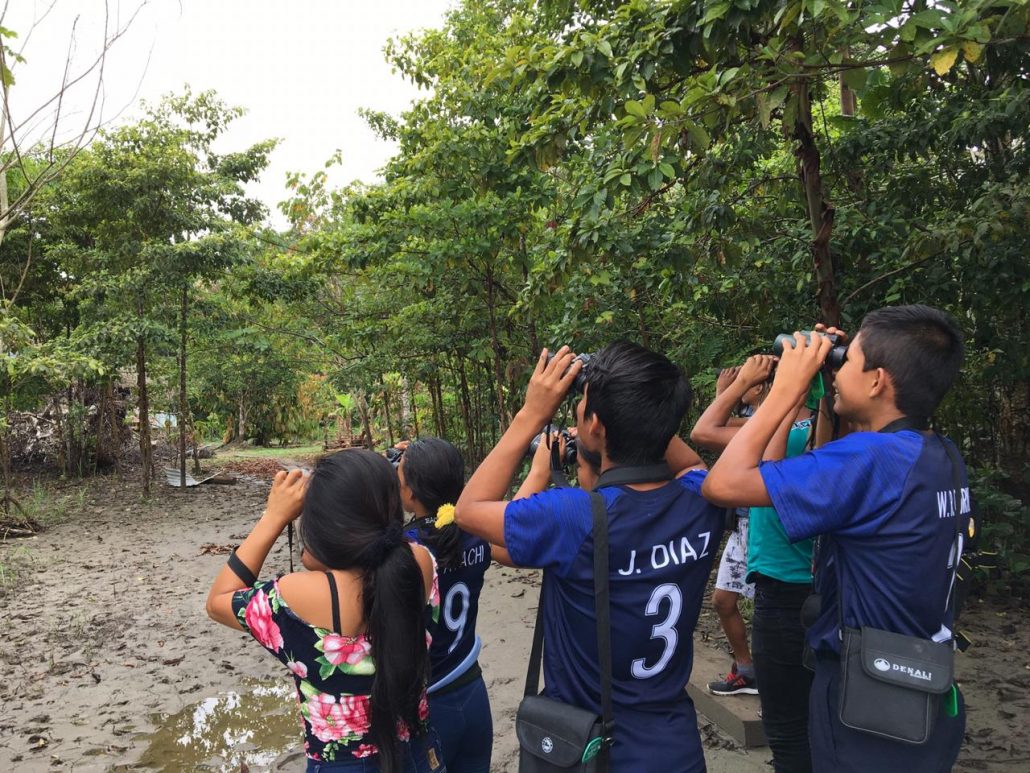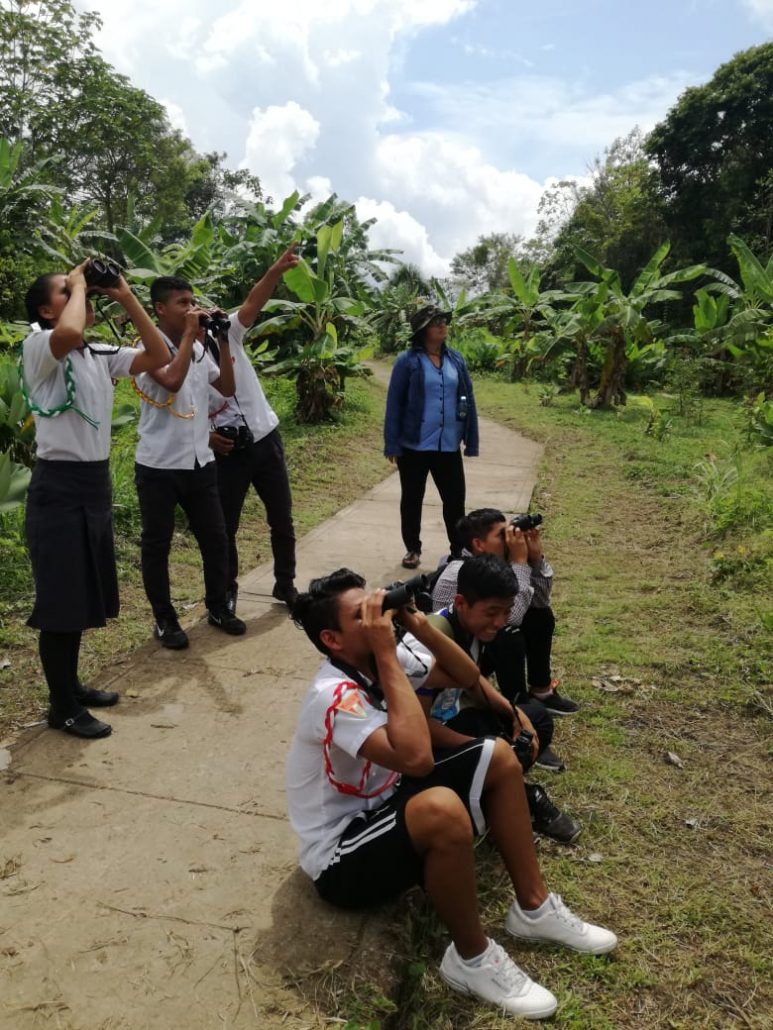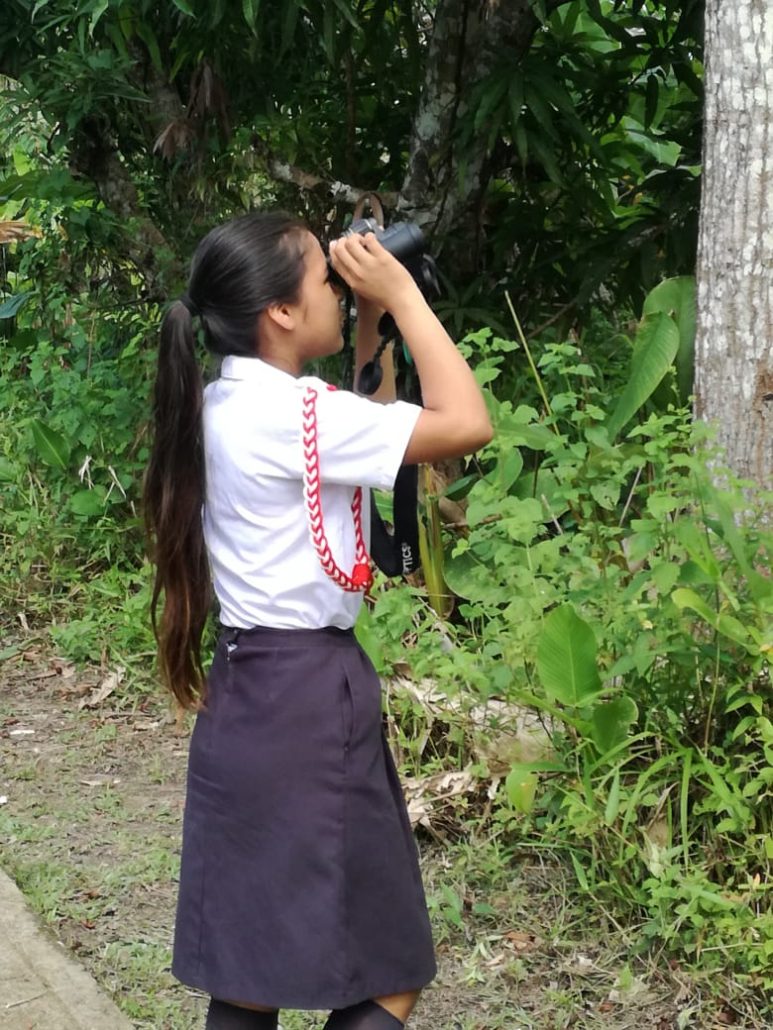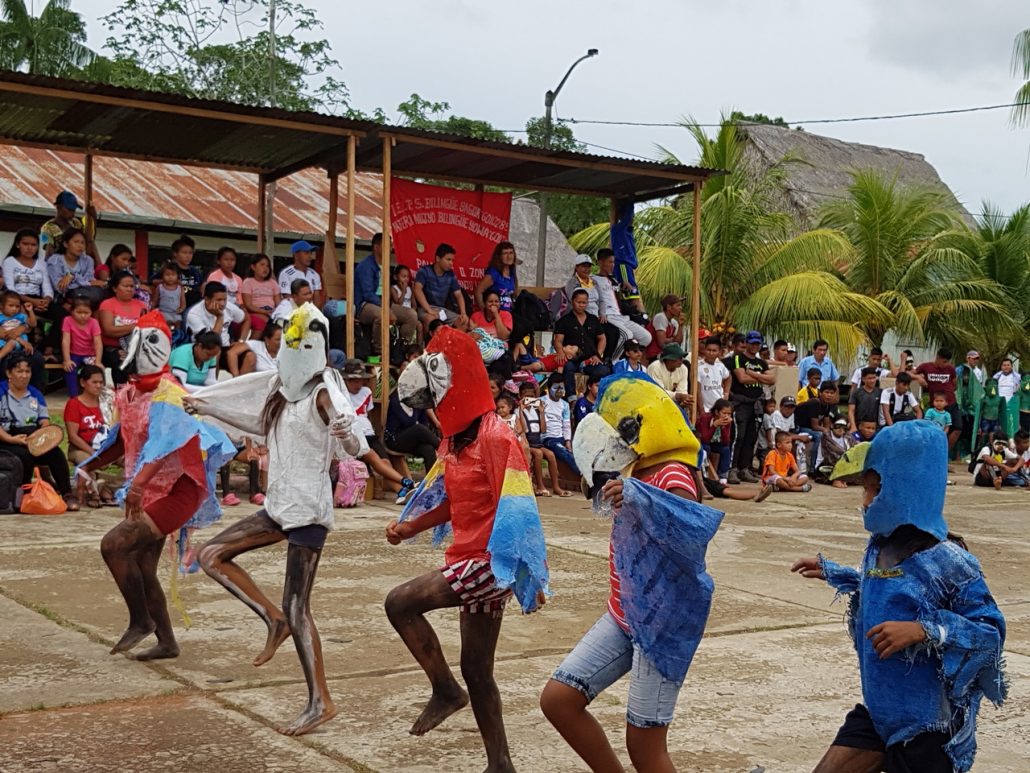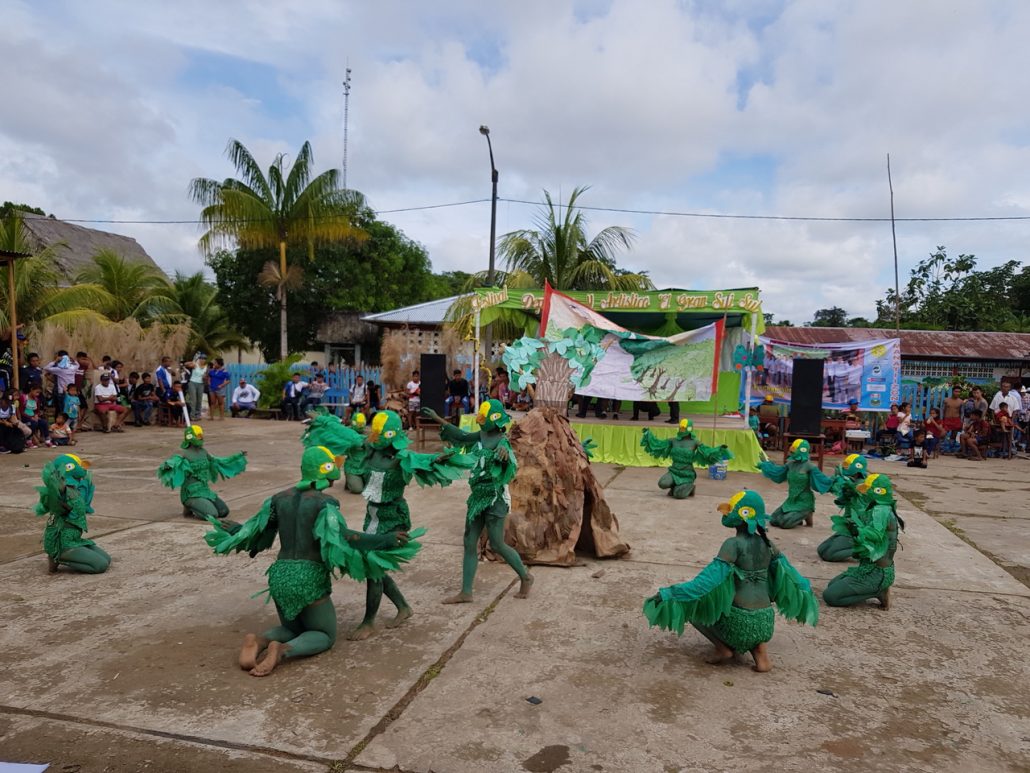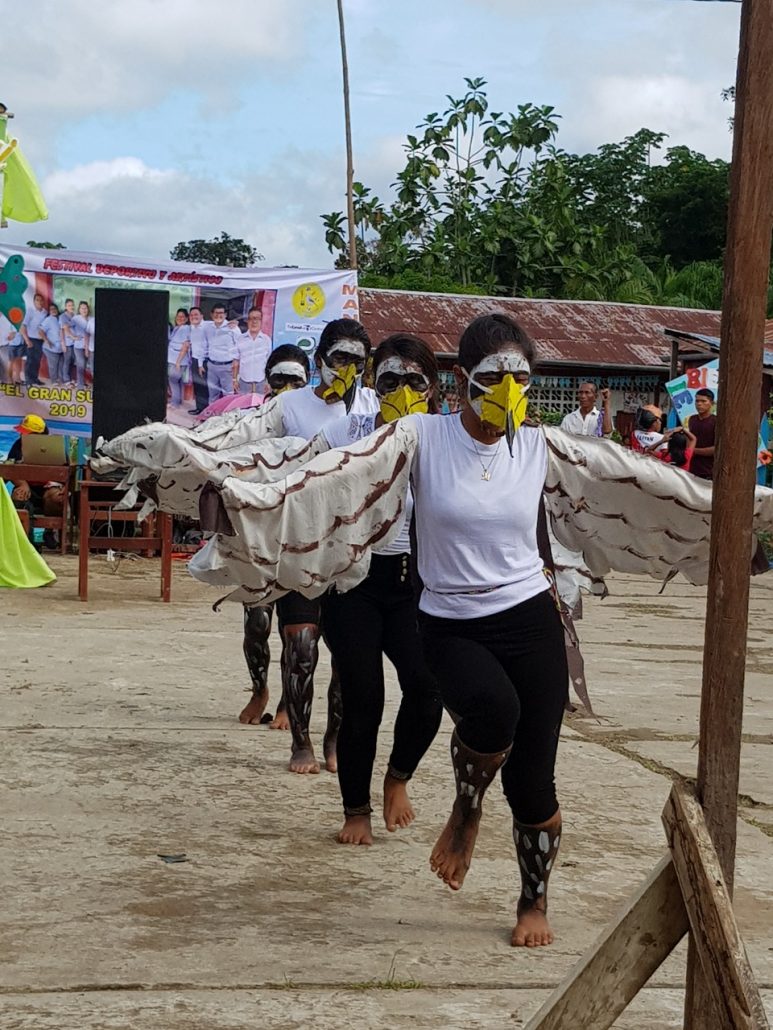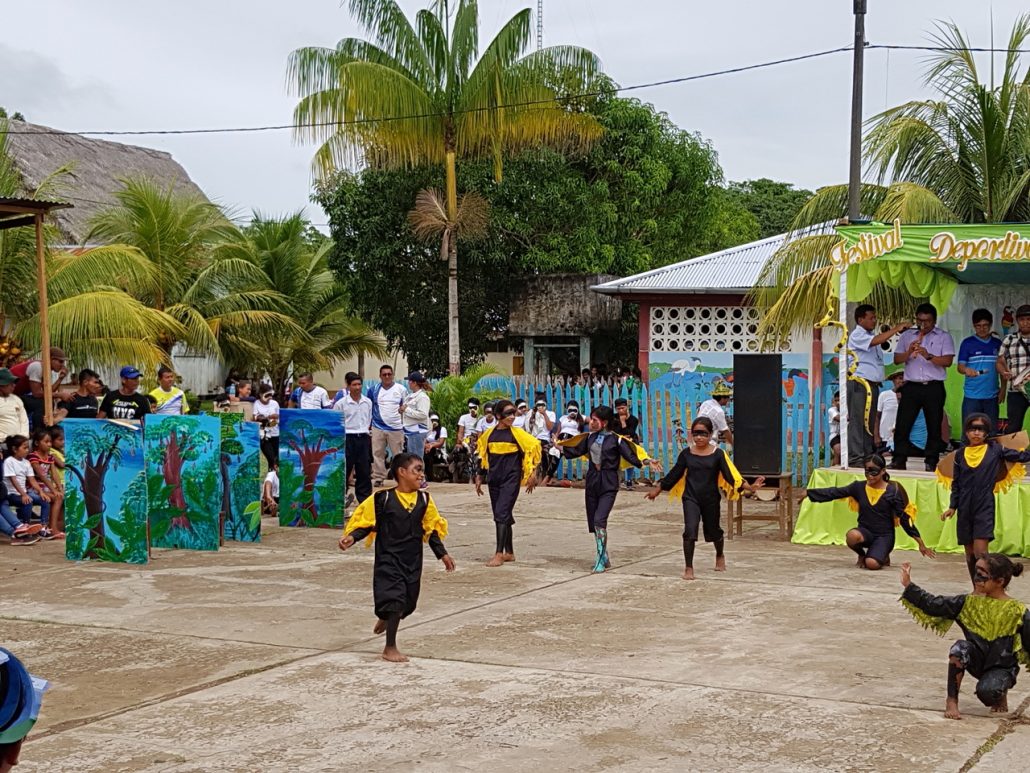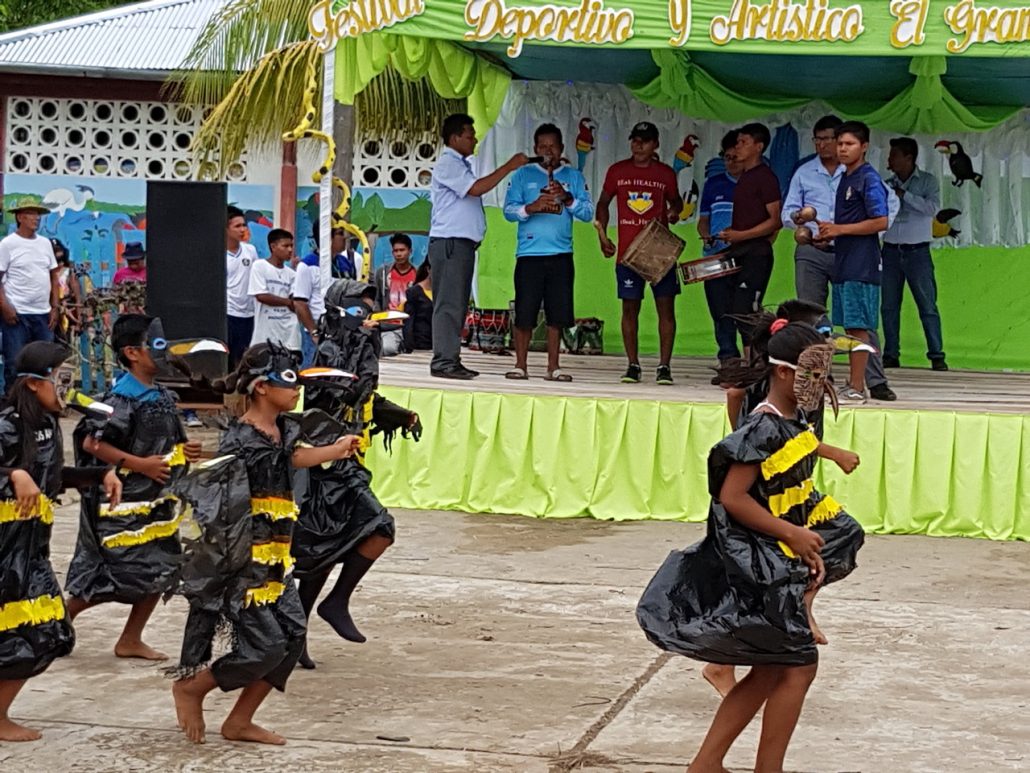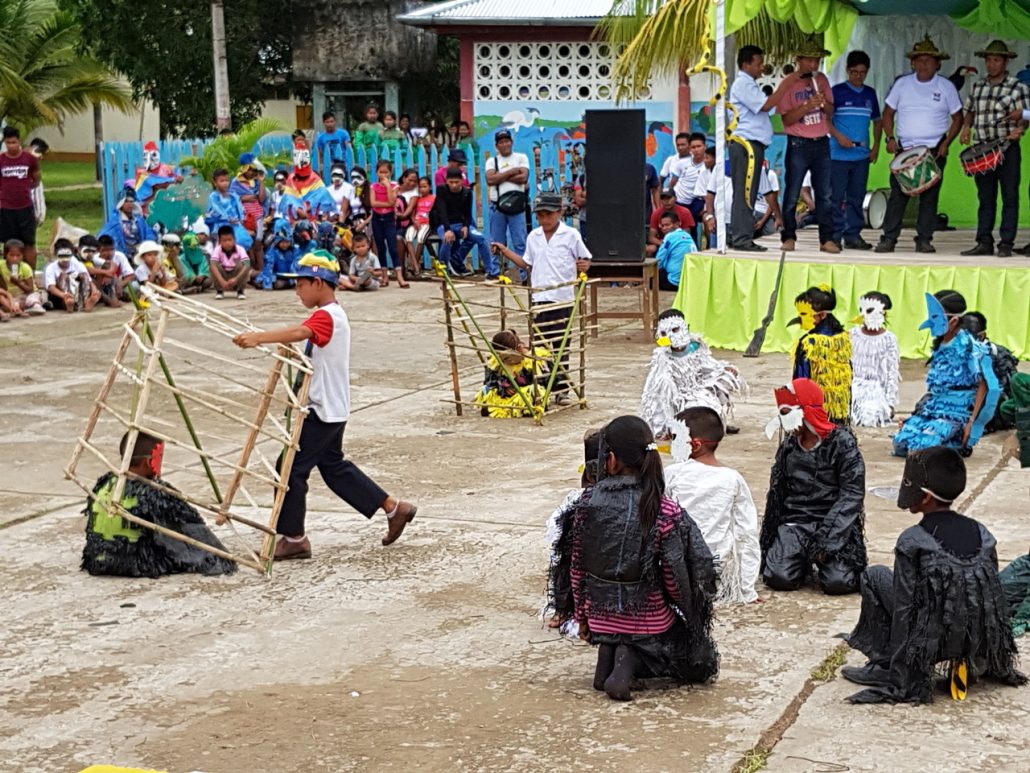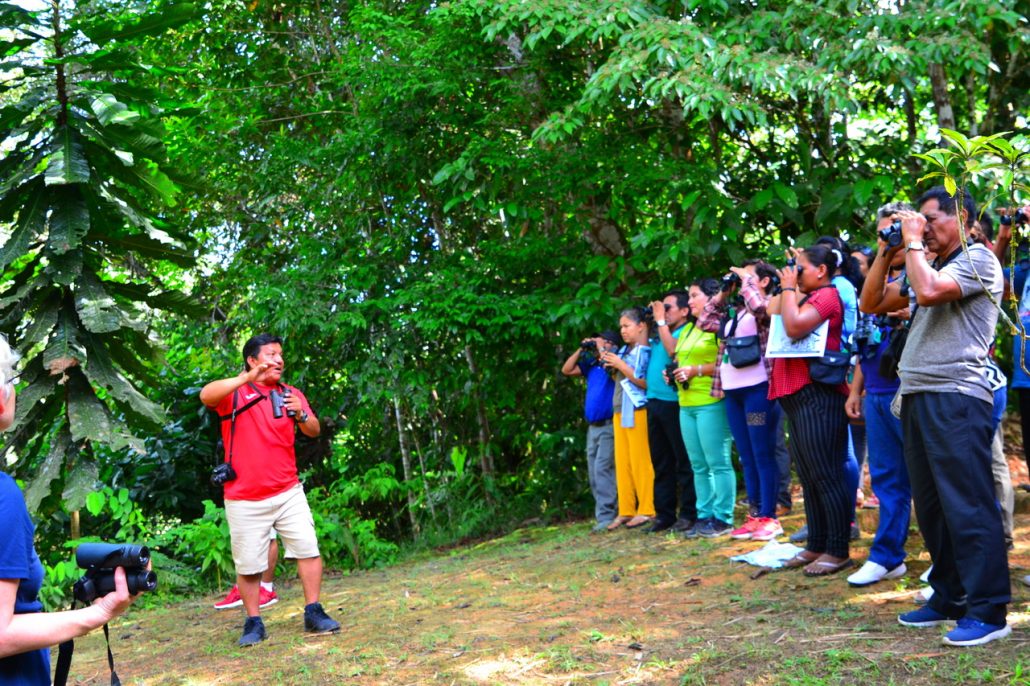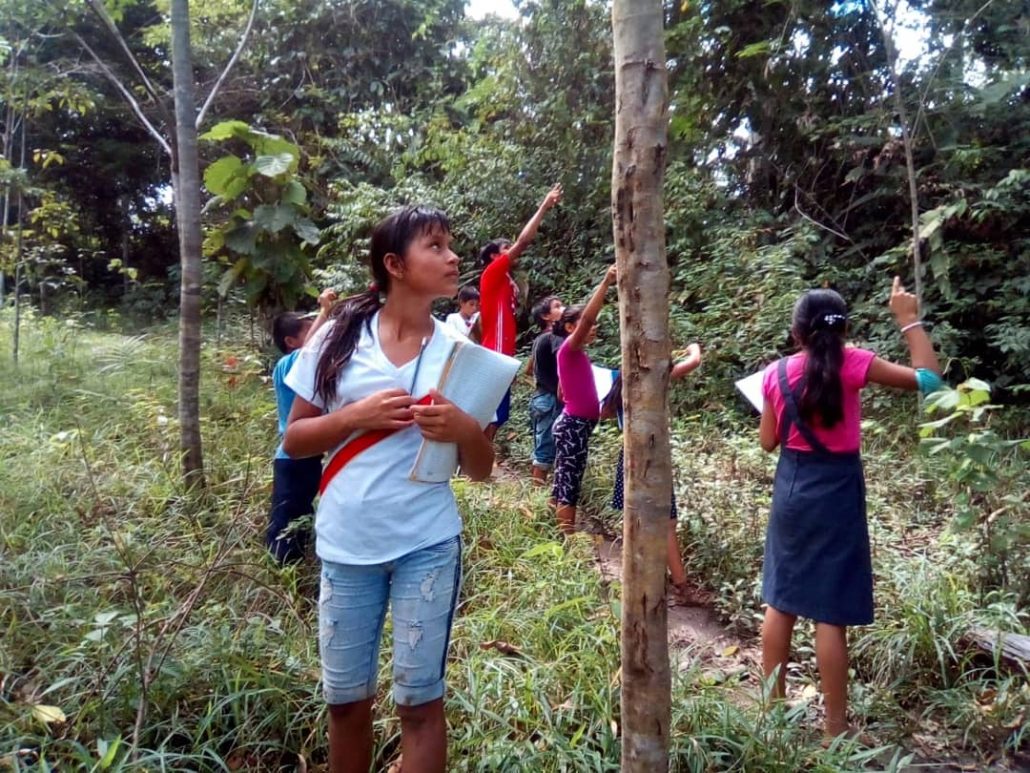Taking Flight! Children’s Love of Birds Inspires Hope for the Amazon
Help CONAPAC and the Morpho Institute bring binoculars to student birders in the remote Amazon.
Guest post by Brian Landever, Director of CONAPAC, and Christa Dillabaugh, Director of the Morpho Institute
What happens when you mix more than 1000 students, 250 teachers, 75 binoculars, 26 remote Amazon rainforest communities, a host of international partners, and one ecolodge? An incredible bird education project in the heart of the Peruvian Amazon!
Thanks to collaboration between CONAPAC, the Morpho Institute, and the Cornell Lab of Ornithology, students from pre-school through high school are learning about behavior, habitat needs, and cultural significance of birds in the Amazon. Their passion became evident when students presented unsolicited skits, songs, and dances related to bird conservation during CONAPAC’s April 2019 visits to participating villages.
Then, in September 2019, 26 remote communities participated in this region’s first ever bird festival. Hosted in the community of Manati on the Amazon River, students inspired onlookers with bird-related art, music, and dance. Read all about this birding festival and CONAPAC’s educational efforts in the Amazon in our previous post: A Bird Celebration REVOLUTION is Happening Right Now in the Amazon.
Photo Credit: CONAPAC
With growing publicity, the students and teachers are excited to be recognized as leaders in a new force for conservation of the Amazon rainforest.
The Morpho Institute is proud to support this growing movement via our Amazon Binocular Project. When children hold up a pair of binoculars and focus on a familiar bird for the first time, their faces light up with glee. When binoculars are left in their communities, students become experts on the behaviors and habitats of their local birds. But we don’t yet have enough binoculars to meet demand. The 75 pairs of binoculars that we have provided are in constant use, and we aim to add 225 more by 2021.
Photo credit: CONAPAC
You can support this effort to give Amazon students the tools they need to deepen their appreciation of their local birds and support their teachers in taking bird education to new heights!
Please consider donating to the Amazon Binocular Project: https://morphoinstitute.org/amazon-binocular-project/
You also can support Amazon Teacher Training Workshops by donating to CONAPAC at www.conapac.org
Thank you for playing a role in supporting Amazon conservation through education!

